How to Draw Political Cartoonse: Political cartoons are a powerful tool for commentary on current events and social issues. They combine art and satire to convey a message in a way that is both engaging and thought-provoking. If you’re interested in creating political cartoons, here’s a quick guide to help you get started.
1. Understand the Purpose of Political Cartoons
Communicate a Clear Message
The primary goal of a political cartoon is to convey a clear, concise message about a political or social issue. This message should be easily understood by your audience at a glance. Before you start drawing, decide on the specific point or criticism you want to make.
Use Satire and Humor
Humor is a key element in political cartoons. Satire allows you to criticize or highlight issues in a way that is engaging and often disarming. However, it’s important to balance humor with clarity—your joke should enhance the message, not obscure it.
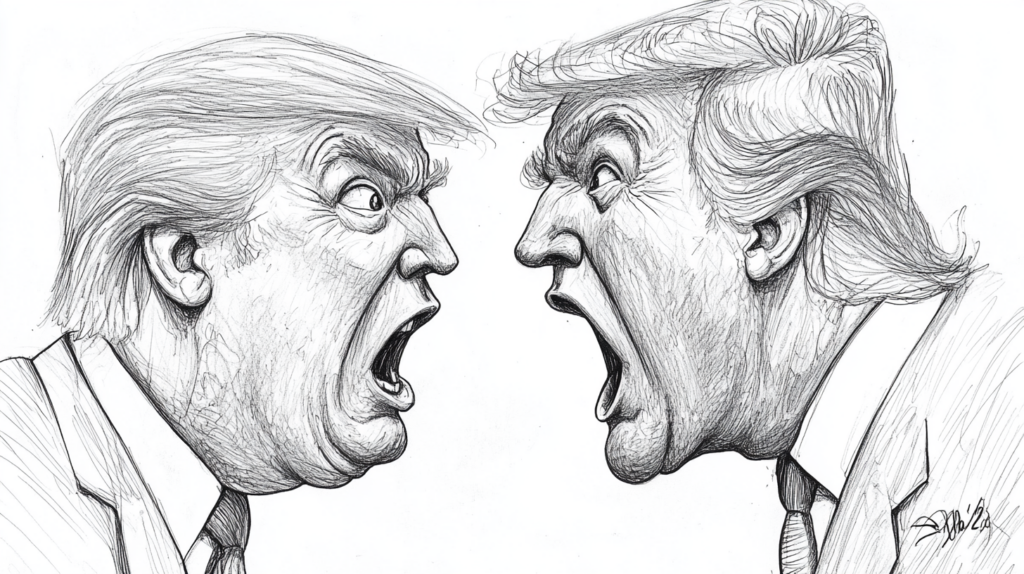
2. Research and Stay Informed
Follow Current Events
To create relevant political cartoons, you need to be well-informed about current events. Regularly read news articles, watch news programs, and follow reliable online sources to stay updated on political and social issues.
Understand the Issues
Go beyond the headlines to understand the key players, history, and different perspectives on the issue you’re addressing. A well-informed cartoon is more likely to resonate with your audience.
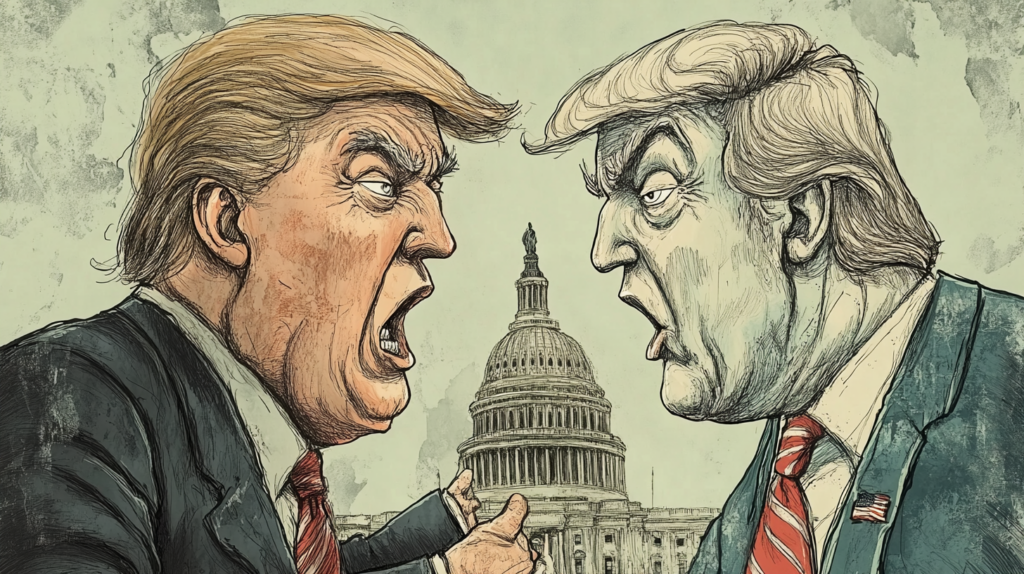
3. Develop Your Concept
Identify the Main Idea
Start by identifying the main idea or message you want to convey. What is the core issue you want to address, and what stance are you taking? This idea will guide the entire cartoon.
Brainstorm Visual Metaphors
Visual metaphors are essential in political cartoons. They allow you to represent complex ideas or issues in a simple, visual way. For example, a sinking ship can symbolize a failing policy, or a ticking clock can represent urgency.
Sketch Rough Ideas
Create rough sketches to explore different ways of visualizing your idea. Experiment with composition, symbols, and character placement. This is the stage where you can try out different concepts before settling on the final design.

4. Design Your Characters
Caricature Key Figures
Caricature is a technique where you exaggerate the features of public figures to emphasize their characteristics or flaws. Focus on key traits like hairstyle, facial expressions, or body language to make the character easily recognizable.
Use Body Language and Expression
Body language and facial expressions are crucial for conveying the emotions and attitudes of your characters. A slumped posture might suggest defeat, while a puffed-up chest might indicate arrogance or pride.
Avoid Stereotypes
While caricature involves exaggeration, avoid using harmful stereotypes. Focus on the relevant traits that define the character’s role in the issue, rather than their ethnicity, gender, or other personal attributes.
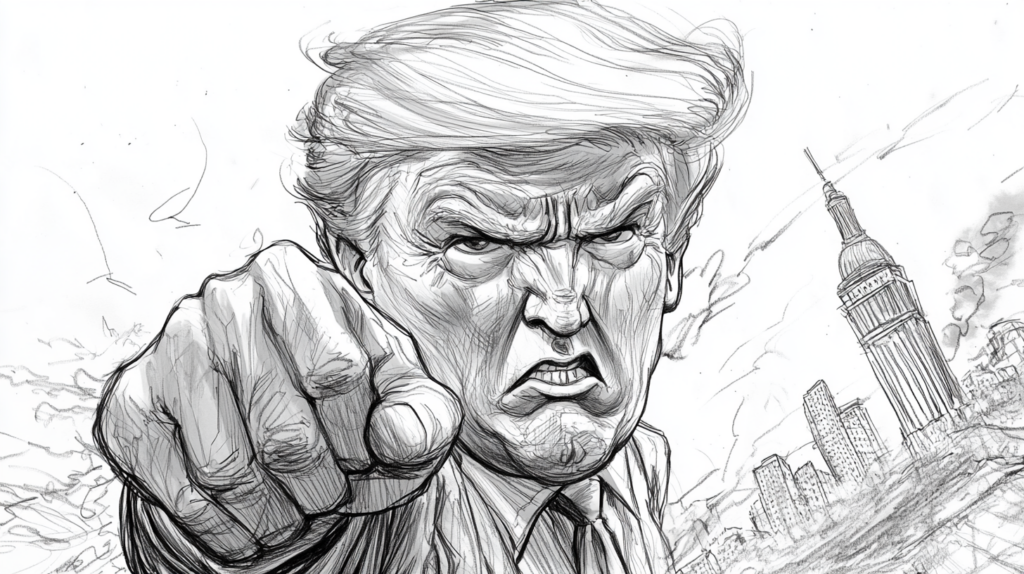
5. Compose the Cartoon
Balance Visual and Text Elements
In political cartoons, the visual elements and text (like captions or dialogue) should work together to convey your message. The image should be strong enough to stand on its own, with text adding clarity or punch.
Use Symbolism
Symbols are powerful tools in political cartoons. Common symbols include scales of justice, Uncle Sam, or the Grim Reaper. Choose symbols that are widely understood and relevant to the issue.
Create a Focal Point
Every political cartoon should have a clear focal point—an element that immediately draws the viewer’s attention. Use contrast, size, and positioning to make sure this focal point stands out.
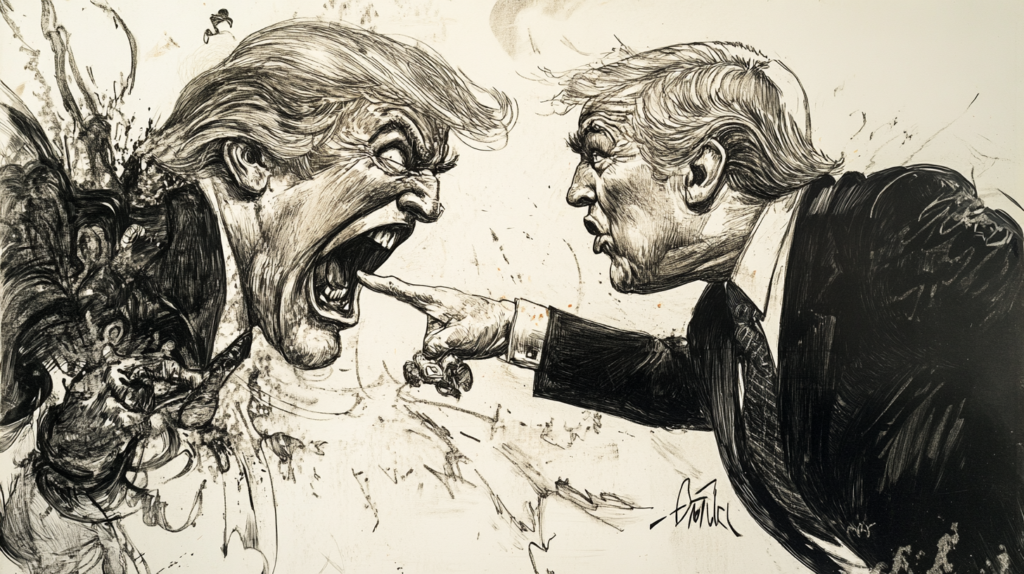
6. Inking and Coloring
Inking
Once your sketch is finalized, ink the cartoon to create clean, bold lines. Pay attention to line weight—thicker lines can emphasize important elements, while thinner lines can add detail.
Shading and Texture
Add shading and texture to give your cartoon depth and dimension. Techniques like cross-hatching, stippling, or solid shading can create shadows and highlights.
Coloring
If you choose to use color, do so to enhance the impact of your cartoon. Use color to highlight important elements or create contrast. Be mindful of color choices and their potential associations.

7. Refine and Finalize
Review for Clarity
Take a step back and review your cartoon for clarity. Is your message clear? Can the viewer quickly understand your point? If anything seems confusing, make adjustments.
Get Feedback
If possible, share your cartoon with someone else to get their feedback. Fresh eyes can spot issues or offer suggestions that you might not have considered.
Finalize and Publish
Once you’re satisfied with your cartoon, finalize it by adding any finishing touches. Save it in the appropriate format for publication—whether for print, online, or social media.
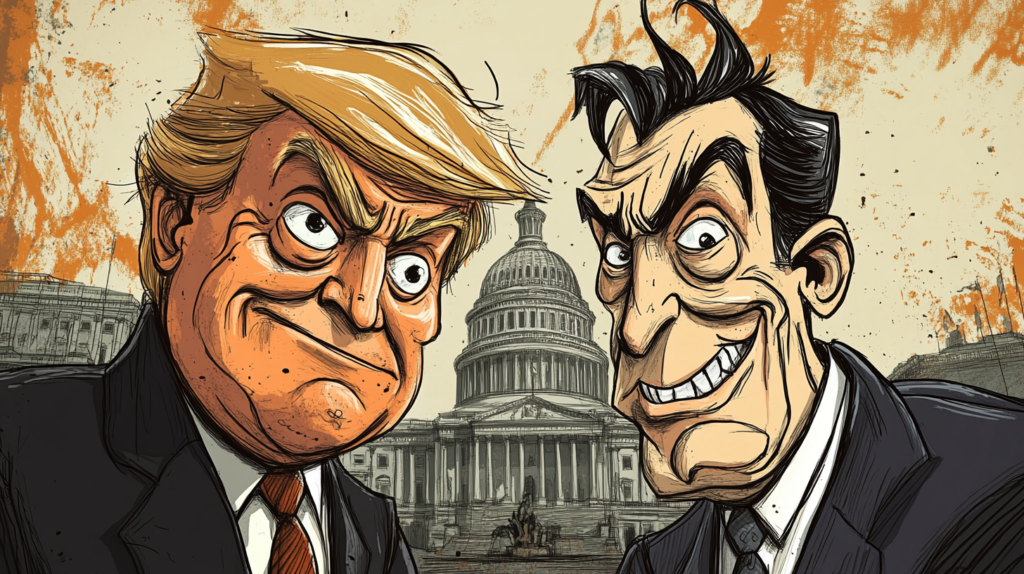
Submit to Publications
Research publications that accept political cartoons and follow their submission guidelines. Be prepared for both acceptance and rejection, and keep submitting your work.
Use social media platforms and your personal website to share your political cartoons with a broader audience. Engage with your audience by encouraging discussions and sharing your thoughts on the issue.

Creating Effective Political Cartoons
Drawing political cartoons requires a mix of artistic skill, humor, and a deep understanding of current events. By following this quick guide, you can create cartoons that not only entertain but also provoke thought and contribute to the public discourse. With practice, your political cartoons can become a powerful tool for commentary and change.
Frequently Asked Questions: How to Draw Political Cartoons – Quick Guide
What are the key elements of a political cartoon?
- Visual Metaphors: Use symbols and metaphors to represent political concepts, figures, or events (e.g., using a donkey to symbolize the Democratic Party in the U.S.).
- Exaggeration: Amplify features of political figures or situations to highlight the absurdity or critique effectively.
- Captions and Dialogue: Include captions, speech bubbles, or textual elements to convey the message or add context.
- Clarity: Ensure that the cartoon is easily understandable and that the political commentary is clear and direct.
How do I choose a political topic for my cartoon?
- Current Events: Focus on recent news or political events that are relevant and engaging.
- Public Figures: Choose prominent political figures whose actions or statements are being widely discussed.
- Social Issues: Address ongoing social or political issues that resonate with your audience and are ripe for satire.
- Research: Stay informed about political developments and public opinion to select topics that are timely and impactful.
What drawing techniques are effective for political cartoons?
- Simplified Style: Use a simplified and exaggerated style to make your message more impactful and easily recognizable.
- Strong Lines: Employ bold lines and clear shapes to emphasize the main elements of your cartoon.
- Contrast: Utilize contrast to highlight important features and draw attention to key aspects of the cartoon.
- Color: Use color strategically to enhance the visual impact and support the cartoon’s message.
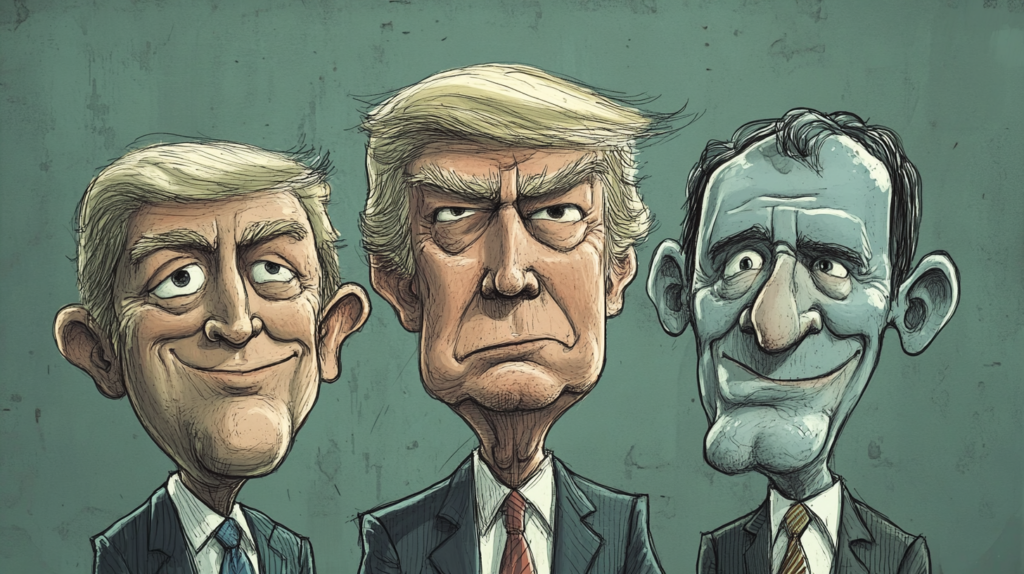
How can I ensure my political cartoon is both effective and respectful?
- Research Thoroughly: Ensure that your cartoon is based on accurate information and not spreading misinformation.
- Avoid Personal Attacks: Focus on critiquing policies or actions rather than targeting personal attributes or making offensive statements.
- Consider Sensitivities: Be mindful of cultural and social sensitivities to avoid unintended offense.
- Seek Feedback: Share your cartoon with peers or mentors for feedback to ensure it communicates your intended message effectively.
What are some common pitfalls to avoid when drawing political cartoons?
- Overcomplication: Avoid cluttering the cartoon with too many elements that may confuse the viewer.
- Subtlety: Ensure your message is clear; subtle or overly abstract cartoons may not effectively convey the intended critique.
- Bias: Strive for balance and fairness, even when expressing a strong opinion, to maintain credibility.
- Outdated Content: Ensure that the topics and references in your cartoon are current and relevant to avoid appearing out of touch.
How can I improve my skills in drawing political cartoons?
- Practice Regularly: Create and review multiple cartoons to develop your style and improve your technique.
- Study Other Cartoonists: Analyze the work of established political cartoonists to understand different approaches and techniques.
- Seek Critique: Share your work with others for constructive feedback and to identify areas for improvement.
- Stay Informed: Keep up with current events, political discourse, and cultural trends to ensure your cartoons are relevant and impactful.
What tools and materials are best for creating political cartoons?
- Digital Tools: Use graphic design software like Adobe Illustrator, Photoshop, or free alternatives like GIMP for digital cartoons.
- Traditional Materials: Pen and ink, markers, or watercolors are effective for hand-drawn cartoons, which can be scanned and digitized for publishing.
- Drawing Tablets: Invest in a drawing tablet for a more intuitive digital drawing experience.
- Social Media: Share your cartoons on social media platforms like Twitter, Facebook, and Instagram to reach a broad audience.
- Blogs and Websites: Publish your work on personal or guest blogs, and online magazines dedicated to political commentary.
- Editorial Submissions: Submit your cartoons to newspapers, magazines, or online publications that accept political cartoons.
Can I monetize my political cartoons?
- Freelance Work: Offer your cartooning services to newspapers, magazines, and online publications.
- Merchandise: Create and sell merchandise featuring your cartoons, such as prints, t-shirts, or mugs.
- Crowdfunding: Use platforms like Patreon to gather support from fans and offer exclusive content.
What legal considerations should I keep in mind when drawing political cartoons?
- Copyright: Ensure that your work is original and avoid infringing on other creators’ copyrights.
- Defamation: Be cautious of making claims that could be considered defamatory or libelous.
- Fair Use: Understand the principles of fair use, especially if incorporating or referencing copyrighted material.
By following these guidelines and continuously refining your skills, you can create impactful and effective political cartoons that resonate with your audience and contribute to public discourse.
This post was created with our nice and easy submission form. Create your post!









5 Comments